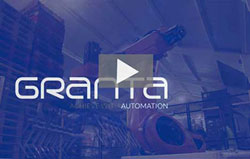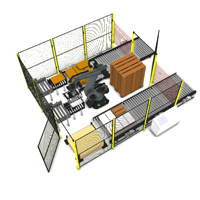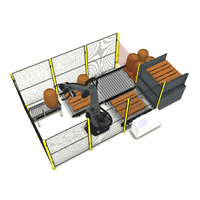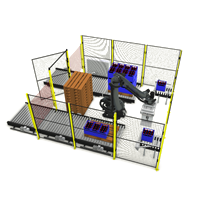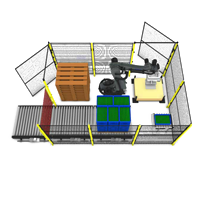A Strategic Guide to Unlocking Productivity, Reducing Labour Dependency, and Future-Proofing Your End-of-Line Operations
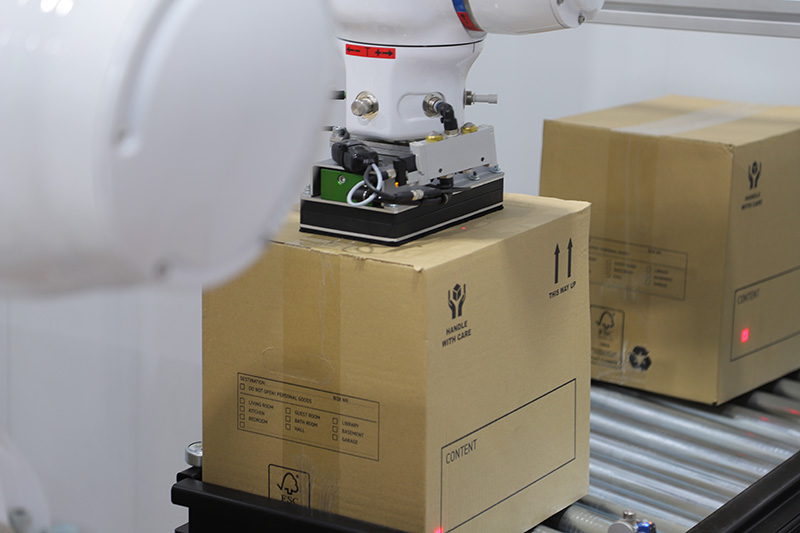
In today’s high-pressure manufacturing and warehousing environment, palletising is far more than a simple end-of-line task—it is a critical process that directly impacts your operational throughput, labour efficiency, shipping costs, and customer satisfaction.
Yet, many businesses still operate with outdated, manual, or semi-automated palletising processes that restrict production scalability and increase cost per unit. If your palletising area is a bottleneck, your entire operation suffers. In this article we look at proven strategies to dramatically improve palletising efficiency—from robotic automation and pattern optimisation to software integration and predictive maintenance.
The Hidden Cost of Palletising Inefficiencies
In many factories, the palletising area receives little attention until something breaks or throughput drops below target. But ignoring palletising inefficiencies can cost your business:
- End-of-line bottlenecks and reduced productivity
- Increased manual labour costs and high staff turnover
- Higher transport costs due to poor pallet utilisation
- Frequent stoppages, stack collapses, and safety incidents
The good news? All of these issues are solvable. And with the right strategy, palletising can move from being a weak point to a competitive advantage.
1. Upgrade to Robotic Palletising: Consistency at Scale
Manual and semi-automatic palletising is labour-intensive, physically demanding, and prone to errors. Robotic palletising offers a scalable solution to these challenges.
Key Benefits of Robotic Palletising:
- High-Speed Precision: Robotic arms can handle multiple picks per minute with extreme accuracy.
- Zero Fatigue, 24/7 Operation: Robots don’t take breaks or call in sick, ensuring consistent throughput on every shift.
- Safe and Ergonomic: Reduces musculoskeletal injuries and improved compliance with health and safety standards.
- Multi-SKU Adaptability: Easily reprogrammed by factory staff to handle varying product sizes, shapes, and stacking patterns.
At Granta Automation, our robotic palletising systems are designed to integrate seamlessly with existing lines and can be scaled from single-line to multi-line operations. Whether you’re palletising cases, bags, bottles, or drums, robotic systems provide the repeatability and flexibility manual processes can’t match.
2. Intelligent Pallet Pattern Optimisation: Stack Smarter, Not Harder
Poorly optimised pallet patterns don’t just waste space—they also increase the risk of load collapse, increase shipping costs, and require more packaging materials. Advanced palletising software changes the game.
What Pattern Optimisation Can Do:
- Maximise Pallet Density: Fit more product per pallet while maintaining balance and structural integrity.
- Reduce Transport Costs: Fewer pallets mean fewer lorry loads and lower carbon emissions.
- Improve Load Stability: Engineered patterns reduce tilting and shifting during transport.
- Accelerate Changeovers: Pre-programmed patterns can be switched in seconds for different SKUs.
Using Granta’s easy programming software, you can programme and test stacking configurations in minutes, before production even begins—minimising risk and maximising output.
3. Seamless Line Integration: The Efficiency Multiplier
Palletising doesn’t happen in isolation. Your system’s true efficiency depends on how well it communicates with the upstream and downstream processes.
Full-System Integration Should Include:
- Infeed Conveyors with Product Orientation Tools
- Real-Time Synchronisation with Case Packers and Shrink Wrappers
- Outfeed Conveyors Linked to Stretch Wrappers or AGVs
At Granta, we specialise in end-to-end automation, designing palletising systems that integrate seamlessly with your existing production equipment—so rather than simply adding a robot, you’re enhancing the performance and efficiency of your entire line.
4. Modular, Future-Proof Design: Build for What’s Next
In today’s market, agility is everything. A system that works today may fall short tomorrow if it lacks adaptability. That’s why modular design is a critical component of long-term palletising efficiency.
Advantages of Modular Palletising Cells:
- Fast Reconfiguration: Adapt quickly to changing product lines or packaging formats.
- Minimal Downtime for Upgrades: Add or remove modules without full system overhaul.
- Expandable Layouts: Easily scale your operation as demand grows.
When we design a palletising solution at Granta, we build for today—but we also leave room for tomorrow. Whether you add SKUs, expand lines, or switch to new packaging types, your palletising system should evolve with you—not against you.
Make Palletising Your Competitive Advantage
Palletising is more than a box-stacking exercise—it’s a strategic lever for reducing cost, improving throughput, and unlocking the full value of your production line. Whether you’re dealing with labour shortages, rising order complexity, or aggressive delivery schedules, investing in efficient palletising is no longer optional—it’s essential.
At Granta Automation, we don’t just supply automation—we engineer complete palletising systems designed to fit your products, your space, and your future goals. From feasibility analysis to design, installation, and support, we provide turnkey solutions that deliver real results.
Ready to improve palletising efficiency in your facility?
Call us on 01223 499488, or request a free consultation today. Let us help you stack smarter, work faster, and build an operation that’s ready for whatever comes next.
Find out more…
- Grantas Portable Cobot Palletising System: High-Performance Automation That Moves With You
- Manual vs. Automatic Palletising: A Comprehensive Comparison
- Manufacturing Efficiency: Why Every Second (and Every Pound) Counts
- The Hidden Costs of Downtime in Food & Beverage Production
- How Robotic Palletisers Deliver Fast ROI for Manufacturers

